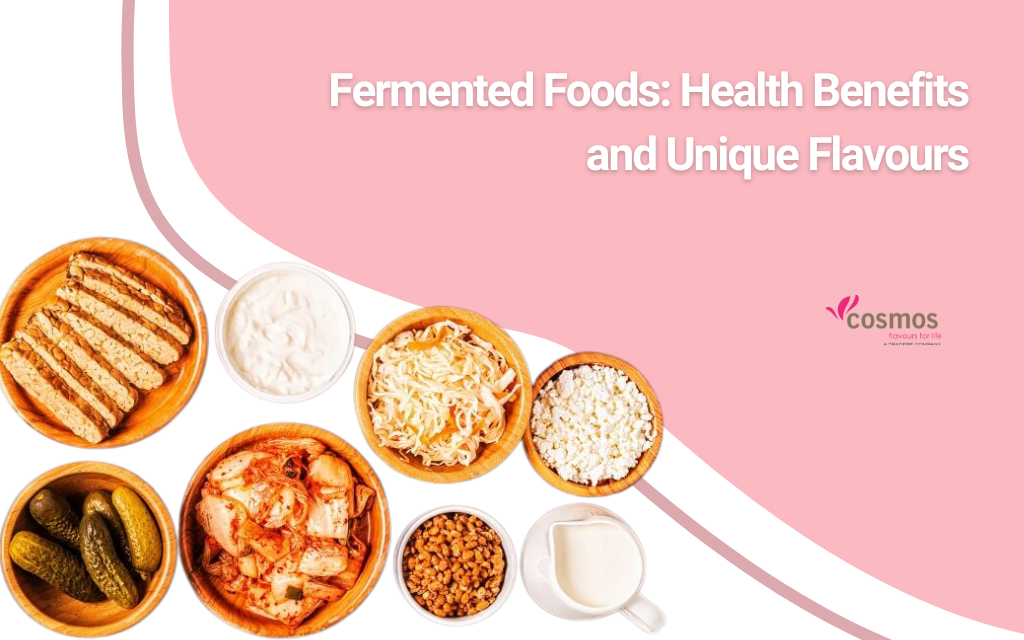Fermented foods are gaining popularity in the food industry, offering not only exceptional health benefits but also a variety of unique and deep flavours.
These foods, produced through the controlled fermentation of microorganisms, not only improve digestion and intestinal health, but also add distinctive character to meals.
Let’s explore how fermented foods are transforming our diet, providing nutritional benefits and enriching our culinary experiences.
What Are Fermented Foods?
Fermented foods are food products that have been subjected to the action of microorganisms, such as bacteria, yeast and fungi, which break down sugars and other components to produce lactic acid, alcohol and other beneficial compounds. This process not only preserves food, but also improves its nutritional value and flavour profile.
Advantages of Fermented Foods
Fermented foods offer several advantages, including:
- Improved Digestive Health: They promote healthy intestinal flora by introducing probiotics.
- Greater Bioavailability of Nutrients: Increase the absorption of essential vitamins and minerals.
- Unique Flavor and Texture: They provide complex flavours and pleasant textures that enrich any dish.
Origin and Development
Fermentation is one of the oldest food preservation techniques, used by various cultures around the world for thousands of years. Ancient civilizations used fermentation to preserve milk, vegetables, meat and grains, creating staple foods that we still enjoy today.
In modern times, science has delved deeper into the mechanisms of fermentation, allowing for greater control over the process and optimization of health benefits. Popular examples of fermented foods include yoghourt, kefir, kimchi, sauerkraut, miso, and kombucha.
Fermented Food Production Process
The fermented food production process is meticulous and divided into several key stages, each crucial to ensuring the quality and benefits of the final product. Below, we detail each step of the process:
Raw Material Selection
The first step is the rigorous selection of high-quality raw materials. These can include milk, vegetables, grains and fruits. The quality of the raw materials is essential, since it influences the flavour and nutritional value of the fermented product.
Inoculation with Cultures
Selected raw materials are inoculated with specific cultures of microorganisms. These cultures can be lactic bacteria, yeasts or a combination of both, depending on the type of fermented food desired.
Fermentation
The inoculated mixture is allowed to ferment under controlled conditions of temperature and time. During this period, microorganisms break down sugars and other compounds, producing acids, gases and other metabolites that transform the food into a fermented product.
Maturation and Storage
Once fermentation is complete, some foods require an additional period of maturation to develop more complex flavours. Finally, the fermented products are stored in conditions that guarantee their stability and safety until consumption.
Health Benefits of Fermented Foods
Fermented foods are recognized for their multiple health benefits, which are supported by numerous scientific research. Here we detail some of the most notable benefits:
Improved Digestion
The probiotics present in fermented foods help maintain a healthy balance of bacteria in the intestine, improving digestion and relieving digestive problems such as irritable bowel syndrome.
Strengthening the Immune System
A healthy gut is crucial for a strong immune system. Probiotics can help prevent infections and diseases by supporting the body’s natural defences.
Greater Nutrient Absorption
Fermentation can increase the bioavailability of certain nutrients, such as B vitamins, vitamin K and minerals such as calcium and magnesium, facilitating their absorption by the body.
Reduction of Inflammation
Bioactive compounds produced during fermentation, such as short-chain fatty acids, have anti-inflammatory properties that can help reduce inflammation in the body.
Culinary Applications
Fermented foods are not only beneficial for your health, but they also provide unique and complex flavours that can transform any recipe. Here we detail some of its most popular culinary applications:
Yoghourt and Kefir
Perfect for breakfasts and desserts, these fermented dairy products are versatile and can be combined with fruits, honey and granola for a delicious and healthy start to the day.
Kimchi and Sauerkraut
These type of vegetables add a spicy, tangy touch to salads, sandwiches and main dishes. They are basic ingredients in Korean and German cuisine, respectively.
Miso y Tamari
These fermented condiments of Japanese origin are essential in soups, dressings and marinades, adding a deep umami flavour to dishes.
Kombucha
This fermented tea drink is popular for its refreshing flavour and probiotic benefits. It can be enjoyed alone or as a base for healthy cocktails.
Conclusion
Fermented foods are much more than just food products; They are nature’s treasures that offer significant health benefits and an unparalleled culinary experience. As we move forward, demand for fermented foods will continue to grow, driven by their unique flavour and health benefits. Integrating these foods into our daily diet is an excellent way to improve our general well-being and enjoy a rich variety of flavours.

